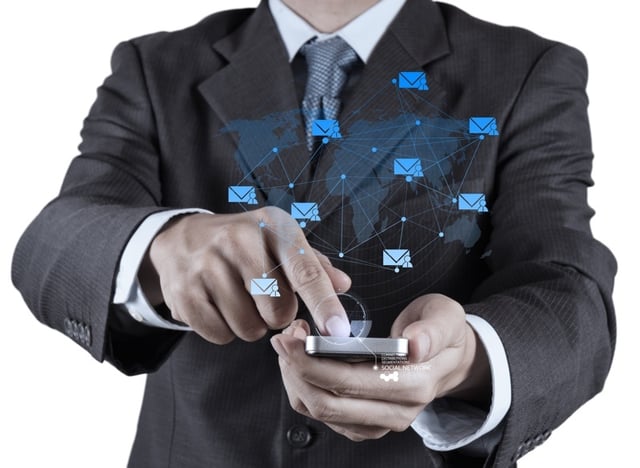
Email is a quintessential boon and bane for every lawyer. It is so ubiquitous and familiar that it has become an integral part of our work. Yet, by not managing it efficiently, it is costing us more time than we realize.
If not managed well, email is distracting and quite addictive. The good news though is there are several practical tips and helpful tools to overcome this problem.
In this post, I list some highly effective ways for lawyers to manage email:
1. Start by exploring the features and functions of your email platform
First off, take a couple of hours, maybe on a weekend or on a less hectic day to understand your email client better. Get to know the advanced features and shortcuts you can take advantage of.
Consider Gmail, for example. You would be surprised how many Gmail users are not aware of the many features it has or the shortcuts that can save a lot of time.
For instance, did you know that if you are part of a group email conversation that you are no longer interested in participating, you can just mute the conversation, and the email thread won’t be bumped back up when there is a new email?
You can also scan through video tutorials and articles on how best to use an email client — be it Gmail, Outlook or any other client. You can learn how task management tools and efficient reporting can benefit your practice.
The more you know the faster and more efficient you will become.
2. Use rules and filters to keep your inbox sorted
Many a time, some question from a non-client finds its way into your inbox, cluttering your inbox and overloading it. If your law firm has an onboarding team or employee, you can apply a rule so that all these emails are automatically forwarded to the onboarding team, saving time and energy.
Also, keeping your inbox sorted using filters and folders will make it easy for you to identify the high priority emails and act on them quickly.
3. Schedule your email check-in times
Email is so tempting in many ways. There are days when you are waiting for that important email reply and you check your email literally once every 10 mins. This is very counterproductive and inefficient. It's a bad habit that needs to be thwarted immediately.
Here’s what you should do: choose 3-4 timings per day to check-in to your inbox and stick to those timings. For example, you can check in once after you arrive at work, once after lunch, once before leaving work. Stick to the same schedule every day.
When you check your inbox, make sure you don’t spend more than 30 minutes reading your emails; set a timer if you have to.
Remember if you don’t manage your email, it will manage you!
4. Take advantage of technology
If you want to be a successful lawyer and you want your law firm to be successful, you must and should embrace technology with open arms. This involves utilizing case management software but also utilizing technology to improve the efficiency of your emails.

It’s not just about using complex software solutions, it’s also about utilizing tools and apps to be more productive in a day.
There are a number of tools that work in sync with your email and help you manage your inbox effectively. For example, Unroll.me allows you to manage all the subscriptions and promotional emails effectively, collaboration tools such as Hiver allow you to operate your entire business via email. You can also use text expansion tools which save you the trouble of typing repetitive messages etc. These tools are often utilized by those who use investigation software in order to save them time and energy.
Use technology to enhance your email platform and turn it into a powerful utility tool. With the right technology, email can be much more than a business communication tool.
5. Use the email triaging technique
Email triaging technique is a simple way to manage your inbox overload. In this technique, you divide your emails into three sections — follow up, hold, archive. You don't have to use these same folders — you can choose names that work best for you.
The archive folder is for emails when you are absolutely done with them and no longer need to attend to them. Instead of letting them clutter your inbox you can simply shift them to an archive folder, where they will be stored in case you need to refer to them at a later time.
The hold folder contains those emails that need some work on your part before responding to them. For example, if your boss sent you an email asking for a list of potential clients, you can transfer this email to the hold folder and start preparing the list.
The follow-up folder is used for emails that require continued action. For example, if you are trying to acquire a new client for your law firm, you probably will have to keep following up with them at regular intervals. In this case, you can just store the email in the follow-up folder.
6. Use other means for internal communication
In a work day, if you really pay attention, a vast majority of the emails you receive are for internal communication purposes.
By using other means to facilitate internal communications in your firm, you will be doing yourself and your employees a favor.
For example, you can use chat tools, a document review software, or you can utilize features such as shared notes that allow you to leave notes on an email or a case for your teammates. If you have a question for your teammate regarding an email, you can just leave a note with the question for him to see.
Wrapping up
Email management is not a set-it-and-forget-it process. You need to consciously monitor your habits and set routines to follow religiously. If you consciously implement the above tips and pair them with some useful tech tools, you will be the master of your inbox.
Niraj Ranjan Rout is co-founder of the collaboration tool Hiver.
